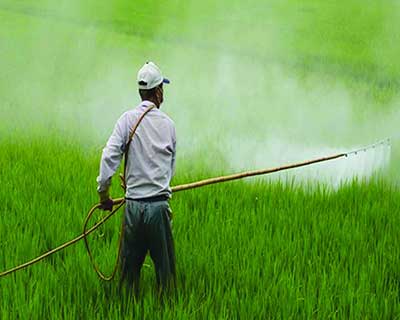Relevance: GS-3: Agricultural produce and issues and related constraints
Key phrases: Draft Integrated Plant Nutrition Management Bill, 2022, Fertilizer Control Order, 1985, Fertilizer Movement Control Order, 1973, Integrated Plant Nutrition Management Authority of India, State Controllers of Fertilisers and Fertiliser Inspectors
Why in News?
- Due to very fluctuating international raw material prices, which had made it difficult for the fertiliser industry to sustain viable operation. Thus, leading to extreme shortages of fertilizers for farmers.
- The Centre has come up with a draft Integrated Plant Nutrition Management Bill, 2022 to help the industry to grow faster and to streamline the fertilizers demand.
About Fertiliser Industry:
- The Indian fertilizer industry is near self-reliant in the case of Nitrogen-based fertilizers.
- India is the 2nd largest consumer of Urea fertilizers after China.
- India also ranks 2nd in the production of nitrogenous fertilizers and 3rd in phosphatic fertilizers.
- Productions are largely state-controlled. Popular PSUs are The Fertilizer Corporation of India Ltd, National fertilizers Limited, Hindustan Fertilizer Corporation Ltd., etc.
- India meets 85 percent of its urea requirement through indigenous production but depends heavily on imports for its phosphate and potash (P & K) fertilizer requirements.
Background
- The many provisions of Integrated Plant Nutrition Management Bill, 2022 are derived from the existing Fertilizer Control Order, 1985 and the Fertilizer Movement Control Order, 1973.
- Fertilizer Control Order, 1985:
- The Central Government may, with a view to regulating equitable distribution of fertilisers and making fertilisers available at fair prices, fix the maximum prices or rates at which any fertiliser may be sold by a dealer, manufacturer, importer or a pool handling agency.
- Fertilizer Movement Control Order, 1973
- In this Order unless the context otherwise requires 'export' means to take or cause to be taken out of any place within a State to any place outside that State.
- No person shall export or attempt to export, or abet the export of, any fertilizer from any state.
Main objectives of the bill
- The Bill aims to promote the development and sustainable use of balanced fertilisers to sustain India’s food and nutritional security without causing adverse harm to the environment and health of the soil.
- It also aims to “simplify the process for the manufacture, production, distribution and price management of fertilisers” with stated objective of “improving the ease of doing business” while encouraging innovation.
- To give effect to the provisions, a sectoral regulator in the form of an Integrated Plant Nutrition Management Authority of India will be set up.
- States have also been empowered to appoint State Controllers of Fertilisers and Fertiliser Inspectors, who can conduct impromptu inspections on industry and trade armed with powers to search, seize and confiscate.
Main concerns with the bill
- Bill too focused on tightening the already pervasive government controls over the fertiliser sector, by setting up an elaborate Inspector Raj to oversee it.
- The Bill empowers the Centre with sweeping powers to cap the maximum selling prices for fertilisers, while allowing it to fix different prices for different regions and customers.
- The Centre will have powers to restrict the movement of fertilisers from one State to another and to dictate the quantities of fertiliser a manufacturer may sell in each State
- The sectoral regulator in the form of an Integrated Plant Nutrition Management Authority of India, State Controllers of Fertilisers and Fertiliser Inspectors, given overarching powers to search, seize and confiscate.
- The fertilizer industry rightly apprehends that the elaborate inspector Raj will encourage rent-seeking and hamper ease of doing business.
Government policies and initiatives in fertilizer sector:
- New Pricing Scheme(NPS) of 2002: The subsidy given to industry equivalent to a differential amount of cost of production and selling price to farmers.
- Nutrient Based Subsidy(NBS) policy, 2010: Subsidy fixed on the weight of different macro/micronutrients
- Neem Coated Urea Policy, 2015: It mandates fertilizer manufacturers for neem coating, to address the issue of black marketing and overuse.
- Gas Pooling Policy, 2015: All units will get uniform prices of gas.
- New Urea Policy, 2015: Free transportation of Phosphorus and Potassium fertilizer according to industrial demand.
Way Forward
- For long, India’s fertiliser industry has been hamstrung by government controls that allow the Centre to fix selling prices of fertilisers, including ‘decontrolled’ ones, far below actual production costs, leading to manufacturers and importers hugely depending on the Centre’s subsidy.
- Artificially low price caps on urea and higher prices for phosphatic fertilisers have actively encouraged skewed nutrient use.
- The solution to most of the sector’s woes lie not in extreme controls but in the Centre stepping back completely from interventions in the product and pricing decisions of the industry and directly compensating farmers for nutrient use through cash transfers.
Source: The Hindu BL
Mains Question:
Q. Highlight the factors that determine location of the fertilizer Industry. Also, discuss the challenges in becoming Atma Nirbhar in fertilizers production. (10 marks)







